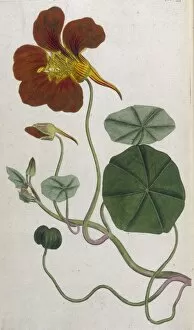Cress Collection (#3)
Cress, also known as salad herbs or plantes condimentaires pour salades, is a versatile and flavorful addition to any dish
For sale as Licensed Images
Choose your image, Select your licence and Download the media
Cress, also known as salad herbs or plantes condimentaires pour salades, is a versatile and flavorful addition to any dish. Its history can be traced back to the Victorian era, where watercress sellers were a common sight on the streets. But cress is not just limited to watercress; it encompasses various species like Thale cress (Arabidopsis thaliana), which has its roots in genetic research. The cultivation plants has become popular due to their culinary uses. The vibrant green leaves of cultured cress add freshness and crunchiness to salads, making them visually appealing and deliciously satisfying. Thale cress, commonly referred to as Arabidopsis thaliana, may be considered a weed but has gained significant recognition for its contribution to genetic studies. Another variety that deserves attention is the blue nasturtium or Indian cress (Tropaeolum azureum). With its striking blue flowers, this type adds an exotic touch when used in salads or as a garnish. Similarly, Scarlet and yellow flowered greater Indian cresses (Tropaeolum majus) bring vibrant colors and peppery flavors into our meals. Waterit also comes in different forms; one such example is the white flowered watercress (Sisymbrium nasturtium). This delicate herb not only enhances the taste of dishes but also provides essential nutrients like vitamins A and C. Whether you are a vegetable grower seeking guidance on incorporating salads into your repertoire or simply looking for new ways to elevate your culinary creations, cress should not be overlooked. It offers endless possibilities for experimentation while adding depth and flavor profiles that will leave your taste buds satisfied. From Victorian scrap images depicting watercres sellers to modern-day scientific research using Thale cresses like Arabidopsis thaliana - this humble herb continues to captivate us with its versatility and culinary potential.





